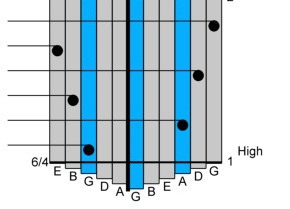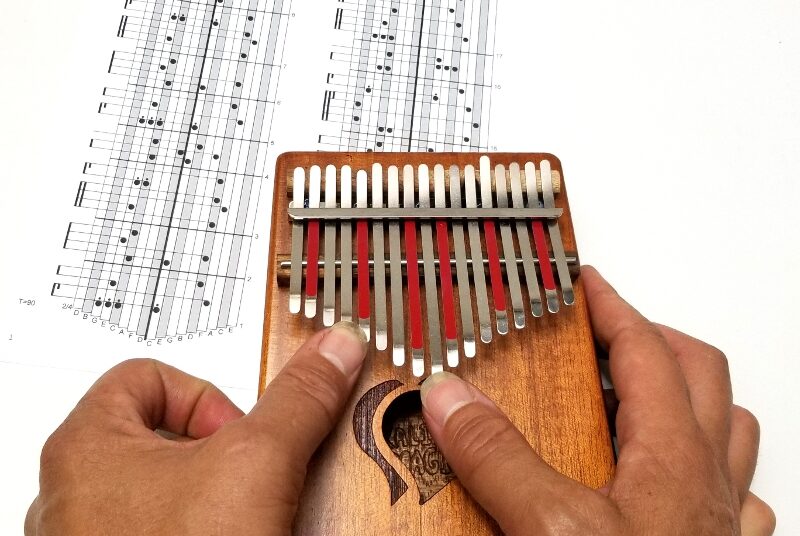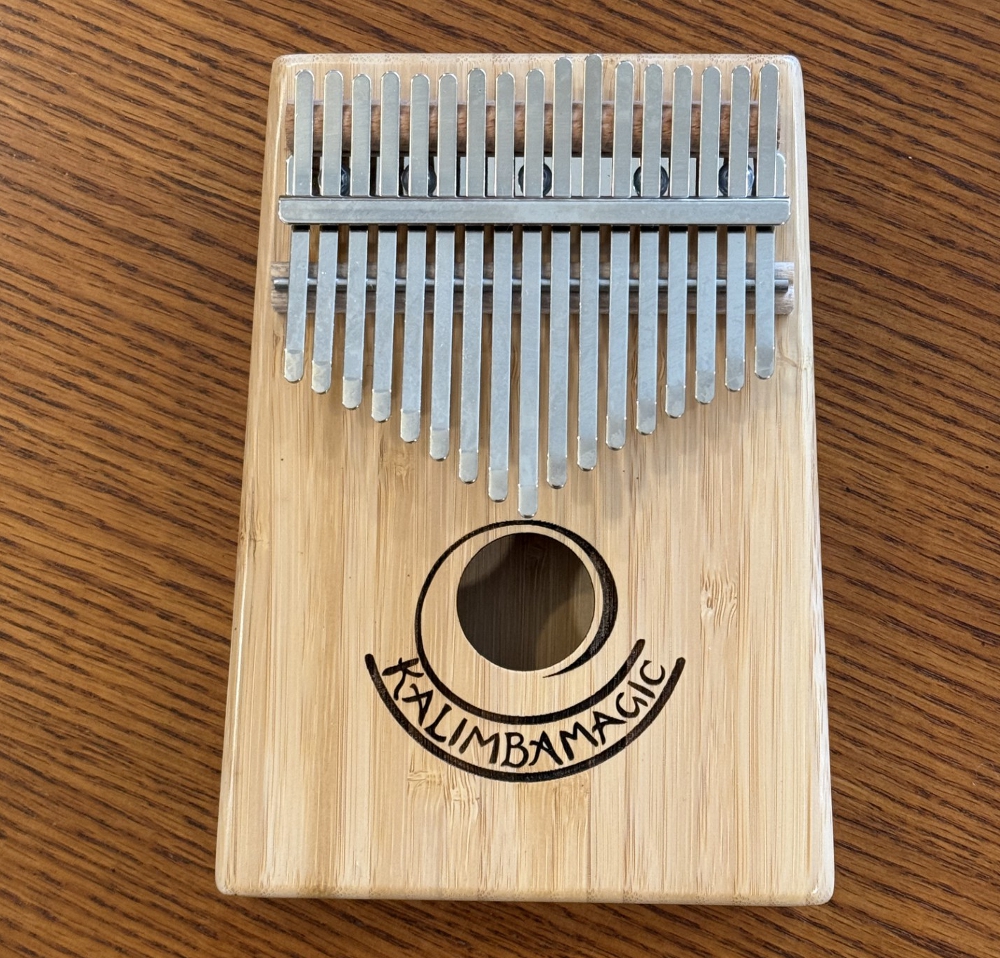
Use of this website constitutes acceptance of the Privacy Policy and User Agreement. Copyright © 2020 Kalimba Magic. All Rights Reserved.
The alternative left-right pattern required to make a scale is one of the essential movements you can make on your kalimba, and you should learn this! On the kalimba, scales are not the easiest thing to do because you need to cross over from one side of the kalimba to the other, and you need to do so without loosing your place. However, there is a trick.
By the way, this scale tablature is for the Alto kalimba. Look at each block ball on the tablature, from bottom to top, and trace down to the note name of that tine – the scale goes G, A, B, C, etc to high G.
Some kalimbas have idiosyncratic note arrangements and do not play scales simply by alternating the notes as illustrated here. The Sansula, the I-Ching kalimba, the Lotus karimba, and the African-tuned karimba fall into this category, so this instruction is not specifically applicable to them. On the other hand, instruments such as the Hugh Tracey Alto, Bb Treble, Treble, 8-Note, and Pentatonic kalimbas; the Catania kalimbas; and most Goshen kalimbas have regular alternating note layouts, and this tip works for them.
One out of every three tines on each side of the kalimba will be painted, and the painted tines help you find your way. As you ascend from the beginning of the scale, you cross from left to right, from a painted G to a painted A. The painted tines help you start out the scale! Similarly, the third note in the scale, B, is back on the left side, right next to the painted G, followed by C, a right side note that is right next to the painted A. The painted tines help you match the left and right sides together, making scales much easier than they would otherwise be. A right side painted note will always be one note higher in the scale than its left side counterpart.
Below is tablature for the scale played on the 11-note Hugh Tracey Pentatonic kalimba. There are only five different notes in one octave of the pentatonic scale (C and F# are missing, and the top note G is a repeat of the starting note, but an octave higher), but the basic idea is the same as for the Alto kalimba.



Sign up for our newsletter and free resources with your email address:
We pinky promise not to spam you and to only send good stuff.
 Seek to Infuse Your Musical Moments With Beauty and Magic
Seek to Infuse Your Musical Moments With Beauty and Magic Kalimba Magic – We Give You The Tools You Need to Succeed
Kalimba Magic – We Give You The Tools You Need to Succeed Back in Stock! The Bamboo-17 Kalimba
Back in Stock! The Bamboo-17 KalimbaUse of this website constitutes acceptance of the Privacy Policy and User Agreement. Copyright © 2020 Kalimba Magic. All Rights Reserved.